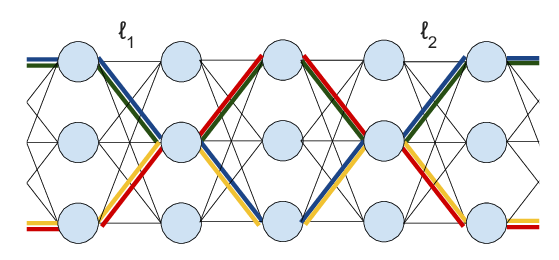Abstract:
This paper studies the expressive power of graph neural networks falling within the message-passing framework (GNNmp). Two results are presented. First, GNNmp are shown to be Turing universal under sufficient conditions on their depth, width, node attributes, and layer expressiveness. Second, it is discovered that GNNmp can lose a significant portion of their power when their depth and width is restricted. The proposed impossibility statements stem from a new technique that enables the repurposing of seminal results from distributed computing and leads to lower bounds for an array of decision, optimization, and estimation problems involving graphs. Strikingly, several of these problems are deemed impossible unless the product of a GNNmp's depth and width exceeds a polynomial of the graph size; this dependence remains significant even for tasks that appear simple or when considering approximation.


